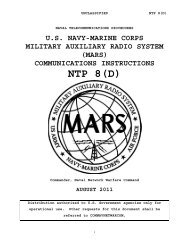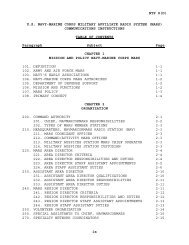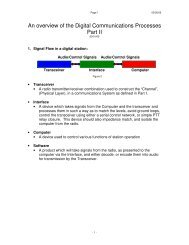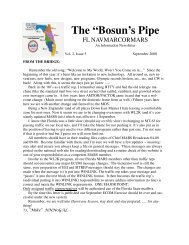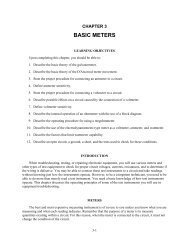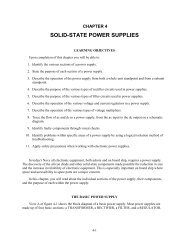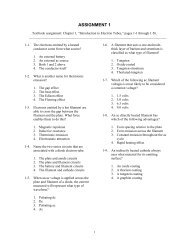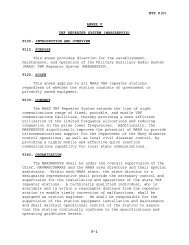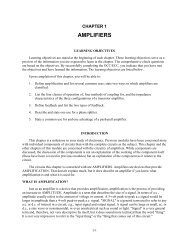Create successful ePaper yourself
Turn your PDF publications into a flip-book with our unique Google optimized e-Paper software.
Simply, quiescent describes circuit conditions when the tube is not amplifying. The tube has nooutput signal and is in a kind of standby, waiting condition. Now let's go on to figure 1-19. With no inputsignal, under quiescent conditions, assume that 1 milliampere of current flows through the tube, cathodeto plate. This current (I p ) will flow through R L (load resistor) to the positive terminal of the battery. Thecurrent flowing through R L causes a voltage drop (IR) across R L equal to:Subtracting the voltage dropped across the plate-load resistor from the source voltage of 300 voltsgives you 200 volts (300 volts - 100 volts). Thus, the plate voltage (E p ) is at 200 volts. The quiescentconditions for the circuit are:These values are shown on the waveforms as time a in figure 1-19.You should notice that even though the grid is more negative (-6 volts) than the cathode, the tube inthe circuit is still conducting, but not as heavily as it would if the grid were at zero volts.Now look at the input signal from the transformer secondary. For ease of explanation, we willconsider only three points of the ac sine wave input: point b, the maximum negative excursion; point c,the maximum positive excursion; and point d, the zero reference or null point of the signal. At time b, theinput signal at the grid will be at its most negative value (-3 volts). This will cause the grid to go to -9volts (-6 volts + -3 volts). This is shown at time b on the grid voltage waveform. The increased negativevoltage on the control grid will decrease the electrostatic attraction between the plate and the cathode.Conduction through the tube (I p ) will decrease. Assume that it drops to .5 milliamperes.The decrease in plate current will cause the voltage drop across the plate-load resistor (R L ) to alsodecrease from 100 volts, as explained by Ohm's law:Plate voltage will then rise +250 volts.This is shown on the output signal waveform at time b.At time c, the input has reached its maximum positive value of +3 volts. This will decrease gridvoltage to -3 volts (-6 volts + 3 volts). This is shown on the grid voltage waveform at time c. This in turnwill increase the electrostatic force between the plate and cathode. More electrons will then flow from the1-26




